The idea of putting an observatory high above the atmosphere to bring twinkling stars and fuzzy galaxies into sharp focus was not new. Almost a century ago, the German engineer Hermann Oberth wrote about using a rocket to launch a telescope into space and in 1946 the U.S. astronomer Lyman Spitzer showed how such an instrument could easily outmatch any of its ground-based counterparts.
Firstly, the effect of atmospheric distortion would be gone, allowing for greater angular resolution and, secondly, the telescope could study the entire electromagnetic spectrum.
Not just visible light, but also infrared and ultraviolet radiation (largely absorbed in our atmosphere) could be observed with crystalline clarity.
Read more about the Hubble Space Telescope:
- Marking 3 decades of the Hubble Space Telescope
- How Hubble changed our view of the Universe
- 21 incredible Hubble images of the past decade
Pulitzer prize-winning journalist John Noble Wilford wrote in The New York Times in April 1990: “After 45 years of dreaming, the Hubble is ready to be taken into orbit.”
As he penned those words, Space Shuttle Discovery stood poised on a Florida launch pad, its payload bay packed with NASA’s scientific showpiece: the $1.5 billion Hubble Space Telescope.
Long billed as being able to see further, deeper and older into space than ever before – back to the Universe’s infancy, when the earliest stars and galaxies took form, shortly after the Big Bang – Hubble promised nothing less than an astronomical revolution.
And for NASA, it was the eighth wonder of the world.
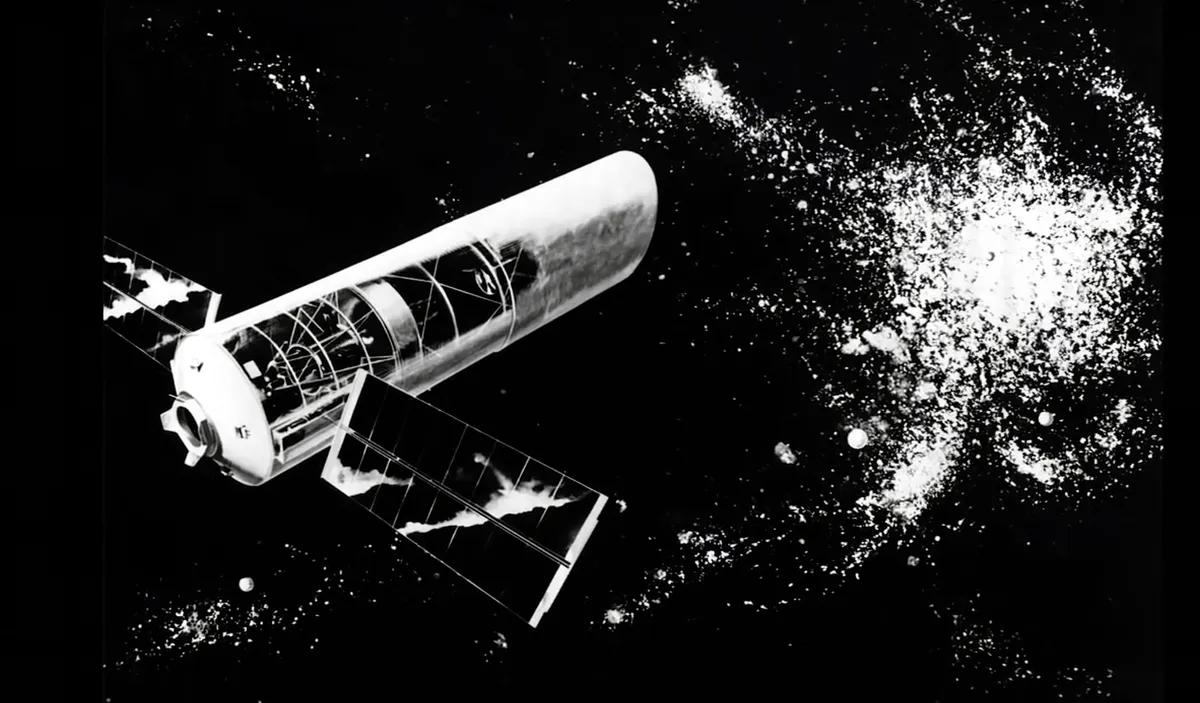
Early plans
In 1962, the National Academy of Sciences endorsed proposals for an orbiting telescope and Lyman Spitzer was put in charge of the group identifying its scientific goals.
A key early task was to show that space-based telescopes could be useful and so, after several early failures, a pair of Orbiting Astronomical Observatories – Stargazer and Copernicus – were launched in 1968 and 1972.
They demonstrated the usefulness of space-based telescopes, revealing comets shrouded in vast halos of gaseous hydrogen, the ultraviolet brightness of distant dying stars, and the discovery of the first long-period pulsars.
To garner support from the astronomical community and Congress, its optical performance had to be kept high and its costs kept low.
Their success convinced NASA to build a large space-based reflecting telescope, initially called LST, whose 3m-wide primary mirror promised to bring even the furthest astronomical objects into stark relief.
Spitzer’s prominent role made some scientists wonder, only half-smilingly, if the acronym stood for ‘Lyman Spitzer Telescope’.
But the reality was far more prosaic. LST simply denoted a ‘Large Space Telescope’, paying homage to its school-bus-sized dimensions, its 11,000kg mass, its huge mirror and its colossal potential for astronomy.
A decade after the idea was proposed, NASA’s Marshall Space Flight Center in Alabama was chosen to lead the assembly of the LST in 1972, taking responsibility for the spacecraft, its systems and its optical telescope.
Goddard Space Flight Center in Maryland would fabricate its scientific instrument package. But to garner support from the astronomical community and Congress, its optical performance had to be kept high and its costs kept low.
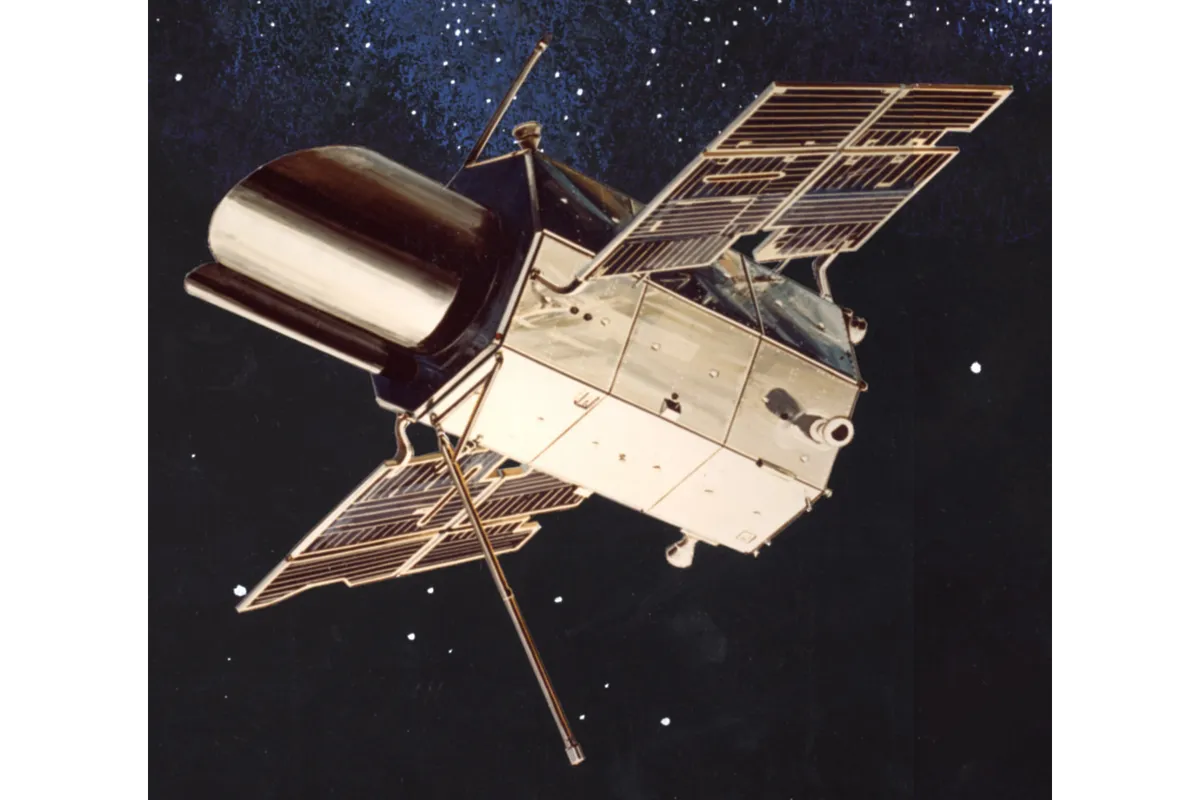
Those costs skyrocketed to $700 million, which NASA administrator James Fletcher considered “not conducive” to the fiscally lean years after the Vietnam War.
In 1974, the House Appropriations Committee judged LST too expensive, too ambitious and lacking requisite scientific support.
Funding was abruptly withdrawn, but a nationwide letter-writing campaign by astronomers, aerospace contractors and optics firms lobbied exhaustively for its restoration.
Their efforts succeeded, but at the expense of massively downsizing the telescope and requiring NASA to seek international partners.
Repairing a telescope demanded 6-hour spacewalks and a whole new order of magnitude in terms of risk.
In 1977, the European Space Agency joined the project with a pledge to build its solar arrays and a faint object camera to study the Universe across ultraviolet, visible and mid-infrared wavelengths.
In exchange, Europe would receive at least 15 per cent of the telescope’s observing time.
Parallel plans for the Space Shuttle raised the possibility of bringing the telescope home every five years for repairs, then putting it back into space and periodically visiting it for upgrades.
Making it ‘maintainable’ would further offset its enormous cost. And giving the Shuttle a role in the project – which, from 1975, gained the unimaginative moniker of ‘Space Telescope’ – would keep it abreast of technological change over 15 years of service.
Costs tumbled to $300 million and in 1978 funding was restored.
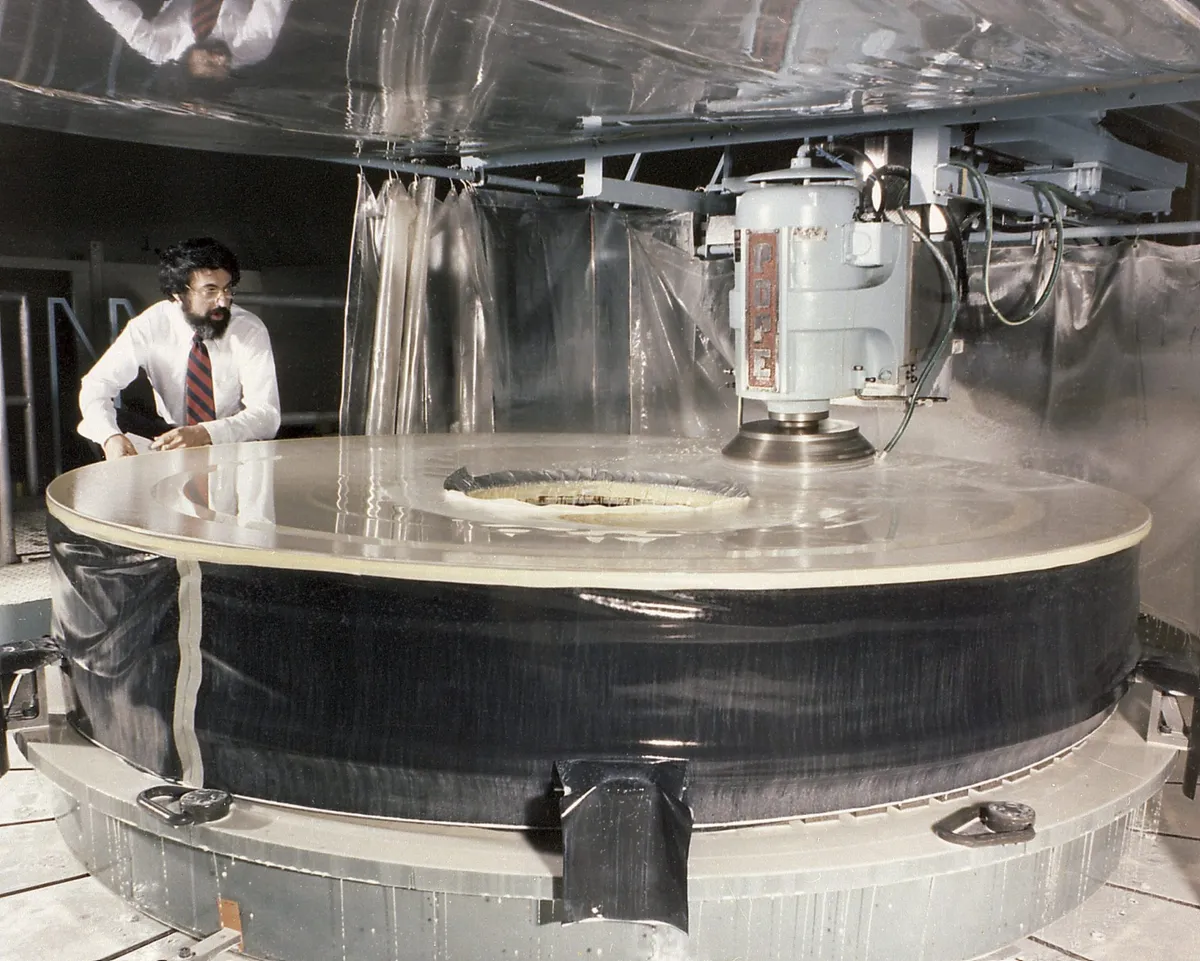
The Shuttle’s 20m-long payload bay enabled the telescope to evolve into a larger machine, its parts no longer required to fit into tiny volumes, and made assembly, testing and repair correspondingly cheaper.
High reliability standards, normally part and parcel of space hardware, were relaxed in response to the promise of regular Shuttle visits.
But the 4.5m width of the payload bay meant the Shuttle could not easily lift a 3m-wide mirror to the required altitude, and so this was reduced to 2.4m.
Nevertheless, flying a smaller mirror slashed polishing times from 3.5 years to 2.5 years and cut manufacturing costs. Scientific instruments dropped from 7 to 4, and its weight fell by a quarter.
In the 1970s, in-space maintenance by astronauts extended little further than replacing photographic film. Repairing a telescope, on the other hand, demanded 6-hour spacewalks and a whole new order of magnitude in terms of risk.
To make it astronaut-friendly, Goddard Space Flight Center’s hard-to-access scientific instrument package was replaced by a toroidal ‘ring’ of equipment bays, wrapped around the telescope’s body.
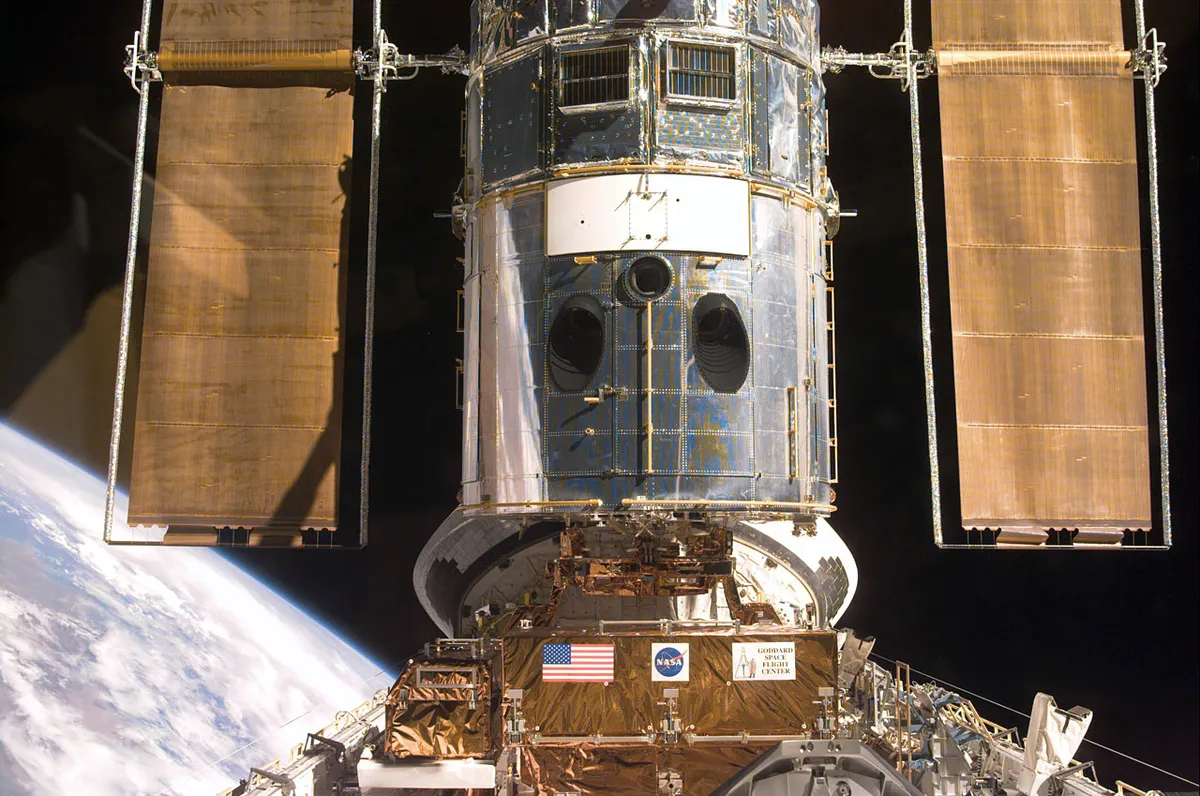
This allowed related parts to be grouped together and instruments to be removed and installed easily by astronauts’ gloved hands. Foot restraints, handrails and standardised bolts and connectors would further aid spacewalkers as they clambered over the telescope.
By this time, launch had slipped from 1979 to 1983. But even when the Shuttle finally began flying, it was obvious that it could not meet the weekly launch schedules advertised by NASA and the plan to return the telescope to Earth for repairs was scrapped.
Some also feared it might get contaminated during its time on the ground, while others felt the expense of re-launching it might see it inauspiciously end its days in a museum.
Instead, it would be completely overhauled in space every few years, which meant that greater ‘maintainability’ had to be built into systems that were never meant to be maintainable.
Even as the telescope weaved its way along a thorny path to space, another issue still lay unresolved.
This one-of-a-kind observatory needed a proper name and, in 1983, two decades after proposals for an orbiting telescope were first endorsed, it got one – the Hubble Space Telescope had been christened.
Who was Edwin Hubble?
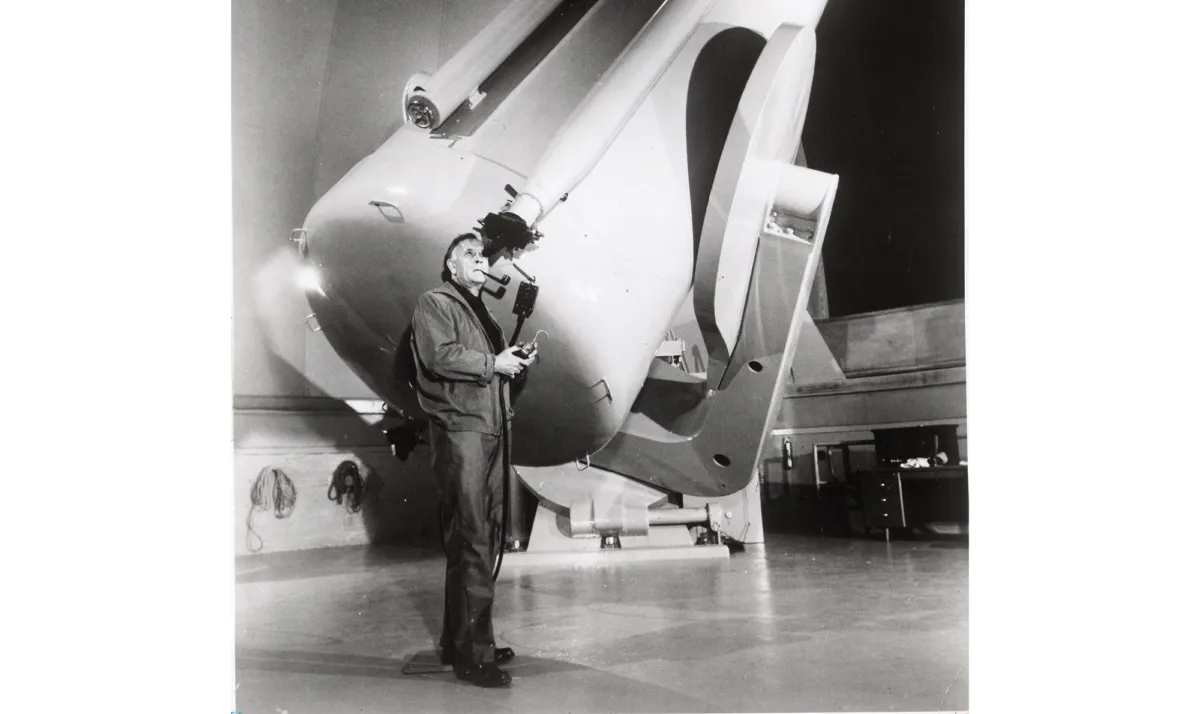
Born in 1889, in Marshfield, Missouri – where a statue of the telescope that bears his name now resides – Edwin Powell Hubble was the son of an insurance executive.
A fine athlete and sportsman, he studied law as a pledge to his father, before returning to his boyhood love of astronomy and a doctorate in 1917.
Hubble was an army officer in the First World War and an astronomer at California’s Mount Wilson Observatory until the end of his life.
Married for 30 years to Grace, his work completely overturned the view at the time that the Universe consisted entirely of the Milky Way.
He made this breakthrough by showing that Cepheid variable stars could be used as yardsticks to measure celestial distances, and finding several spiral nebulae too far distant to be part of our galaxy.
This discovery totally changed our awareness of the cosmos. Hubble devised a classification scheme for galaxies and, in 1929, helped validate theories that the Universe expands at a uniform rate.
Hubble showed that the further apart galaxies are, the faster they recess from one another.
Honoured with an asteroid, a crater on the Moon and a stretch of interstate passing through his birthplace, Hubble is today revered as one of the world’s foremost astronomers, whose discovery changed the cosmological view as much as that of Copernicus.
Ben Evans is a science and space writer. This article originally appeared in Hubble: 30 Years of Discovery, a new special edition magazine available now.